It is not likely that refined fuels will be available for winter heating in the aftermath of disaster. Keeping yourself, your family, indoor crops, and farm animals warm will be very complicated unless you improvise.
Aside from wood which may or may not be plentiful, there are other fuels available that can be used now as well as in a crisis.
While you may need to create new devices for storing and using these fuels, it is well worth the effort.
Determining How Much Fuel to Store
When it comes to figuring out how much fuel to store, you will find that each person’s home and situation are slightly different.
For example, one person may need to heat only a few square feet of space that is well insulated, while someone else may need to heat a larger, poorly insulated area. A person living in a warmer climate may also need to store less fuel than someone in a colder region.
Some calculators can be used to determine how many BTUs you will need per day on average to heat any given area. From there, you can use the next link to see how many BTUs you can expect from some of the fuels listed in this article.
http://www.generatorjoe.net/html/energy.html
http://www.calculator.net/btu-calculator.html
Candles or Wickable Fuels
Wax, crayons, shortening and solid greases can all be turned into fuel simply by adding a wick. Aside from fabric based wicks commonly found in candles, you can roll up a sheet of paper, or even a toothpick to act as a wick.
If you cannot buy candles or grease, fat from animals you hunt can be made into candles or grease pots. The average tea light will produce 250 BTU for about 4 hours. You can store candles and other wickable fuels in a cool, dry place where mice or other animals cannot eat them.
Best Use Tip: To get the most out of these fuels, and make a candle heater from clay pots. This will help increase the surface area heated by the fuel as well as help reduce the amount of soot that gets into the room. Just be sure to clean the soot from the inner chambers on a regular basis so that heat spreads as much as possible.
Paper
Everything from newspapers to old bills can be used to heat your home in the winter. Aside from simply burning crumpled up or rolled up paper logs, you can also make them into bricks mixed with sawdust and other flammable materials.
Once you make paper logs, they should be stored in a cool, dry place. In order to make paper logs:
- Start out by immersing paper in a bucket of water until it all turns to mush
- Mix in sawdust or any other additives that are of interest to you
- Pour the mixture into a screen box to pull out as much liquid as possible
- Use a block or some other heavy object to press down on the paste left in the box
- Let the brick dry out for several days and remove it from the screen form
Best Use Tip: Line your stove with bricks that will increase heat radiation. Advanced preppers can also turn the stove into a boiler or place copper pipe behind the stove and run water through that into radiators. You can also use a fan to blow hot air away from the stove and into the room. A ceiling fan set on low can also help push warm air back down to lower levels.
Methane and Heat from Compost
As you may be aware, compost piles produce quite a good bit of heat, and they also release methane. Creating methane capture systems will make it possible to operate methane heaters, stoves, and other devices. Just be sure to store the methane in tanks that are designed for this purpose.
You can utilize the heat from compost piles by running black plastic pipe throughout the pile. You will need a pump to bring the water into the house and then circulate it through radiators designed to accommodate water flowing through them.
Best Use Tip: Heat up water and then run it through pipes in the room or house. Use a ceiling fan to help keep warm air in the center of the room instead of letting it escape through the roof.
Passive Solar Heat
As strange as it may sound, no discussion on alternative fuels for the winter would be complete without studying passive solar heat. Essentially, you can use tin cans painted black and housed in glass to build up heat and then push that heat into the house.
If you aren’t comfortable with trying to vent hot air through a window or hole in the wall, then simply add a few coils of copper tubing to the external heater and then connect a pipe from that to hot water radiators located throughout the house.
Advanced preppers can also try “storing” some of the heat generated during the day by burying a water tank with copper tubing in it, and then pipe the water from underground into the house.
If you are planning to use wood to keep your home warm, you may find yourself looking for alternatives faster than expected. The five fuels listed in this article are largely untapped and also far easier to renew than wood.
Why not give them a try and see what you can do to lower your heating bill this winter and prepare for a crisis at the same time?
This article has been written by Carmela Tyrell for Survivopedia.


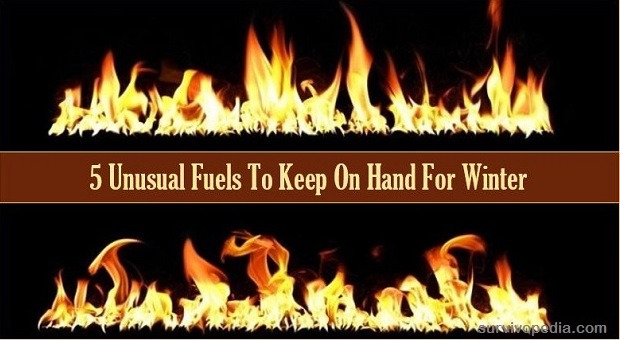
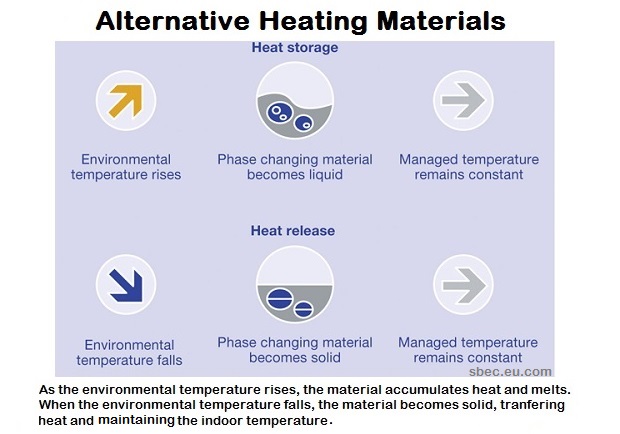

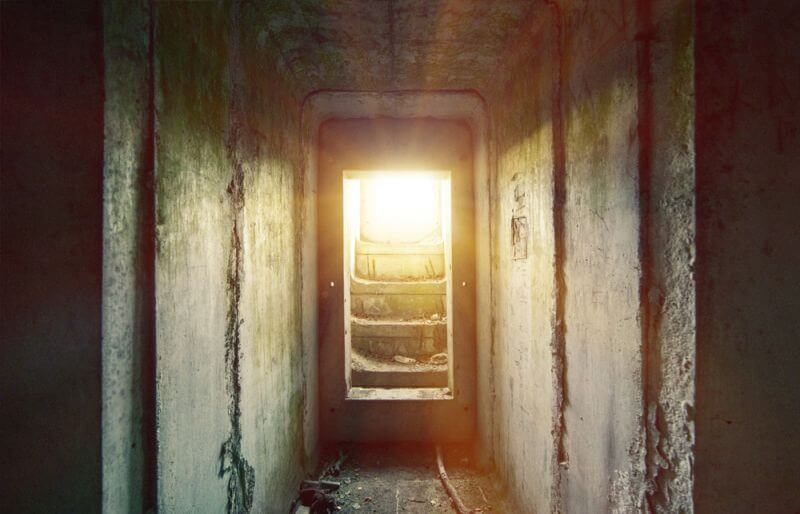
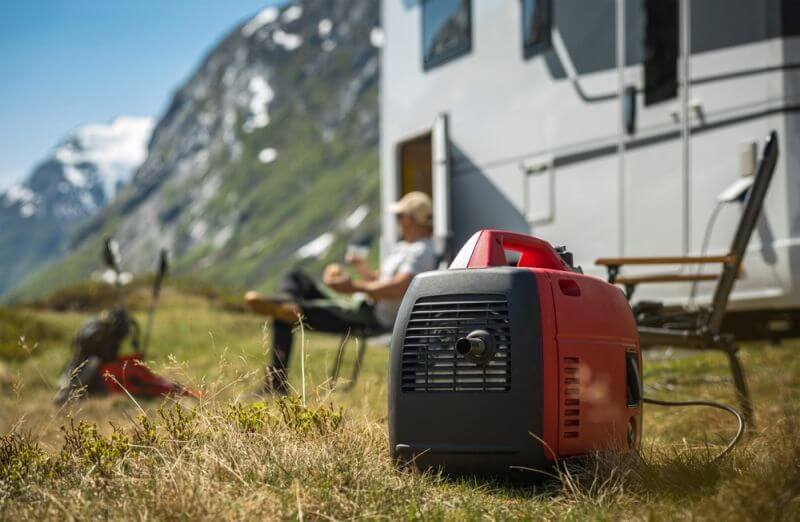
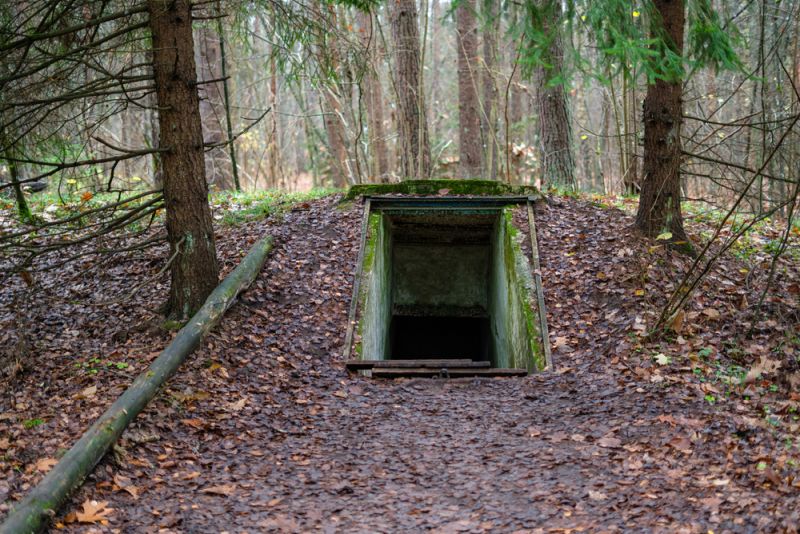
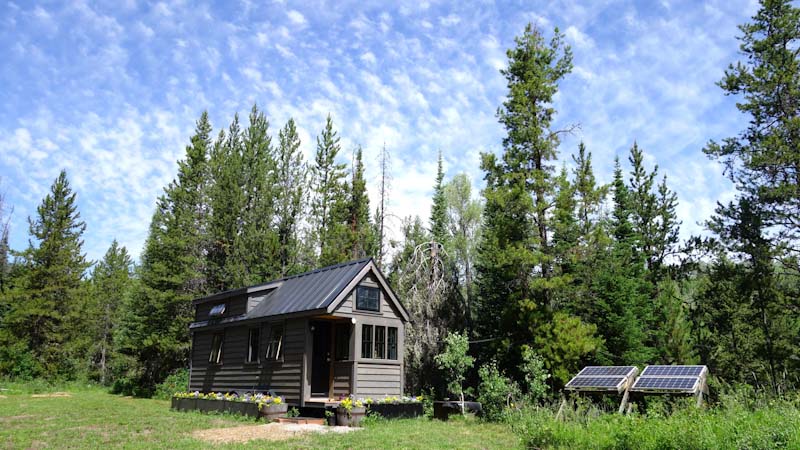


Pingback:5 Unusual Fuels To Keep On Hand For Winter | Survivalist Basics | Be Prepared For Anything! | October 6, 2014
|
Craig | October 6, 2014
|
Is it just me, or does everyone else count the same number of fuel sources? I count four not five.
Candles or Wickable Fuels
Paper
Methane and Heat from Compost
Passive Solar Heat
Is there one missing? Or did you count the paragraph on Determining How Much Fuel to Store as a fuel source?
Marion | October 6, 2014
|
You did not count the first one wood
Analects | October 6, 2014
|
Wood is not “unusual.”
carmela tyrrell | October 6, 2014
|
It is 4 – my bad – sorry. Please see comment above for what I was thinking. Thx.
Cyber Geezer | October 6, 2014
|
There are only FOUR fuels listed … what happened to the 5th one?
carmela tyrrell | October 6, 2014
|
Sorry – you are right – it is four. I was planning on 5; but could not find a viable solution for wind based electric generation. There are conventional windmill blades, however I wanted something with a shell design for home use or something you can build easily enough off grid.
Sorry for the confusion!
Pingback:5 Unusual Fuels To Keep On Hand For Winter - Patriot Rising | October 6, 2014
|
Mucnagow | October 6, 2014
|
Methane is one sourc of to use to make heat & natural heat from composite is another
Pingback:5 Unusual Fuels To Keep On Hand For Winter | TheSurvivalPlaceBlog | October 8, 2014
|
James Burnette | October 9, 2014
|
I keep denatured alcohol around for heat and cooking. Also rendered fat for making lamps
Steever | October 11, 2014
|
Interesting article. I should like to mention that methane is an EXTREEMELY dangerous gas and attempting to store it invites disaster. It has the nasty habit of igniting/exploding at the most inconvenient times. The only way to use it safely without a specialized setup is via a standing flame. This is workable but as the name implies it stays lit and IT MUST NOT be inside any occupied structure. I do not recommend .
Pingback:Firecraft: 6 Survival Fire Starters | Survival skills, survival guns, survival guide | November 13, 2014
|
Pingback:How To Choose A Stove For Your Off-Grid House | Survival skills, survival guns, survival guide | January 12, 2015
|
Pingback:How To Choose A Stove For Your Off-Grid House | The Prepper Dome | January 12, 2015
|
Karen Vegter | May 6, 2015
|
I recently found on line the recipe for gel fuel. However, I’m not sure how to use it. Would this be used in the clay pot heaters?
Pingback:Winter Survival: How To Start A Fire In The Snow | Survivopedia | March 27, 2017
|
Dave Miller | December 29, 2019
|
Hey, I’m a HVAC technician and I noticed that you link to a BTU calculator on https://www.survivopedia.com/fuels-to-keep-on-hand-for-winter/#comments page, I have made a similar calculator based on more standardized and up to date calculations, meaning it’s essentially more accurate.
Would you consider trying it out and possibly adding it as a reference? Here it is: https://heattalk.com/btu-calculator-for-heating/
I can also share the post to my following – via newsletter and Facebook, perhaps we can even collaborate in some other way, I often do guest posts and would love to work with you!
Thanks in advance,
Dave Miller
Alex | January 6, 2020
|
Hi, Dave,
Thank you for your kind message. Would you mind sending an email with your collaboration proposal to [email protected] ?
Stay safe,
Survivopedia team